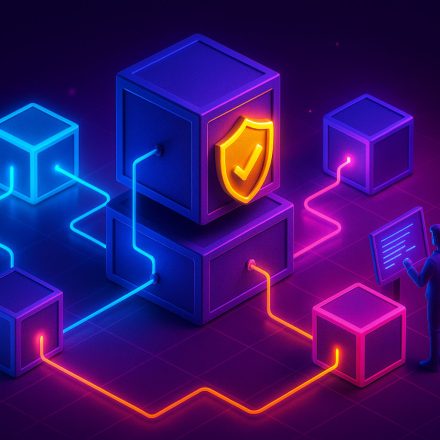
🔐 How Does Staking Secure a Blockchain Network? Explained Simply
How does staking secure a blockchain network is a foundational question in today’s crypto ecosystem. As Proof of Stake (PoS) blockchains like Ethereum, Cardano, and Solana grow in popularity, staking has become essential for keeping these networks safe, fast, and decentralized.
Table Of Content
- 🔎 What Is Staking in Blockchain?
- ⚙️ The Basics of Proof of Stake (PoS)
- Key Features
- 🛡️ How Staking Secures a Blockchain
- 1. Economic Incentives
- 2. Network Participation
- 3. Slashing Mechanism
- 4. Decentralization
- ✅ Benefits of Staking for the Network
- ⚠️ Risks and Trade-Offs of Staking
- 🌐 Popular Staking Networks in 2025
- 🎯 Final Thoughts on Blockchain Security via Staking
- 🔗 Learn More About Blockchain Security
In this article, you’ll learn how staking works, why it’s more energy-efficient than mining, and how it helps secure blockchain systems.
🔎 What Is Staking in Blockchain?
Staking is the process of locking up cryptocurrency in a smart contract to support the operations and security of a blockchain network. In return, participants (called validators or delegators) earn rewards, similar to interest.
Staking is used in Proof of Stake and related consensus mechanisms to:
- Validate transactions
- Propose new blocks
- Secure the network from attacks
The more you stake, the more influence you have in securing the chain.
⚙️ The Basics of Proof of Stake (PoS)
Proof of Stake is a consensus mechanism that selects validators based on the amount of crypto they’ve staked, rather than who has the most computing power (as in Proof of Work).
Key Features:
- No mining required
- Validators are selected at random, weighted by their stake
- Dishonest behavior is punished by slashing a portion of staked funds
- Block rewards and transaction fees go to honest validators
Staking requires less energy and hardware than traditional mining, making it eco-friendly and scalable.
🛡️ How Staking Secures a Blockchain
Staking secures the network in four major ways:
1. Economic Incentives
Validators are financially rewarded for honest behavior — and penalized for bad behavior (e.g., proposing invalid blocks). This discourages attacks.
2. Network Participation
The more people stake, the harder it becomes for a single actor to control 51% of the network.
3. Slashing Mechanism
Validators who try to double-sign blocks or go offline risk having a portion of their stake slashed (burned). This enforces honesty.
4. Decentralization
Staking allows users around the world to participate without needing expensive hardware — helping the network resist centralization.
By combining these elements, staking replaces brute-force mining with economic alignment and game theory.
✅ Benefits of Staking for the Network
| Benefit | Description |
|---|---|
| Security | Financial penalties deter attacks |
| Efficiency | Lower energy use compared to Proof of Work |
| Speed | Faster block finality in many networks |
| Inclusivity | Anyone with crypto can participate (directly or via delegation) |
| Governance | Many PoS chains allow stakers to vote on upgrades |
Staking strengthens the blockchain without requiring massive infrastructure.
⚠️ Risks and Trade-Offs of Staking
While staking is powerful, it isn’t risk-free:
- Slashing risk: Improper validator setup can lead to loss of funds
- Centralization: Large exchanges control a majority of staked funds on some networks
- Liquidity: Staked assets are often locked up for a set period
- Regulatory uncertainty: Some governments are evaluating staking-as-a-service as a security
Understanding these risks is crucial before delegating or becoming a validator.
🌐 Popular Staking Networks in 2025
| Blockchain | Minimum Stake | Annual Yield | Notes |
|---|---|---|---|
| Ethereum 2.0 | 32 ETH | ~3.5–5% | Delegation via Lido or Rocket Pool |
| Cardano | No minimum | ~4.5% | Anyone can delegate with ADA wallet |
| Solana | ~0.01 SOL | ~6–8% | Fast finality, uses delegated PoS |
| Polkadot | 10 DOT | ~12% | Nominated Proof of Stake |
| Avalanche | 2,000 AVAX | ~9% | Validators and delegators supported |
These networks lead the way in PoS adoption and staking mechanics.
🎯 Final Thoughts on Blockchain Security via Staking
So, how does staking secure a blockchain network? It replaces energy-hungry mining with a more scalable, sustainable, and community-driven security model. Validators are financially incentivized to act honestly, and the system punishes bad actors — all while giving users a voice in governance.
If you’re interested in earning passive income while contributing to blockchain security, staking might be the ideal on-chain role for you.
🔗 Learn More About Blockchain Security
- Dive deeper into Blockchain Security
- Explore Ethereum’s official guide to Proof of Stake












